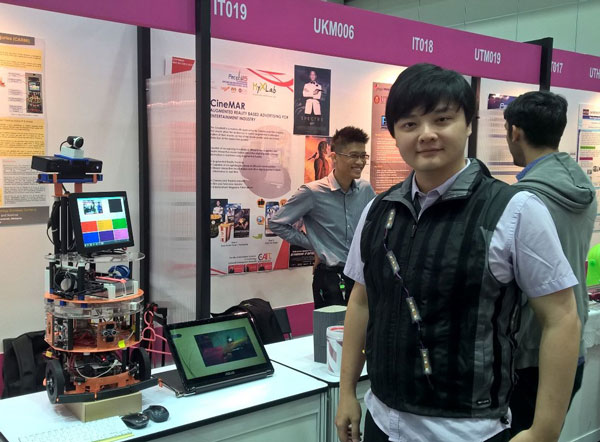KUCHING – A robot that helps to watch over children with disabilities so that they don’t injure themselves was a bronze medal winner at the recent International Conference and Exposition on Inventions by Institutions of Higher Learning (PECIPTA 2015) held in Kuala Lumpur.
Called CARMI, short for Companion Avatar Robot for Mitigation of Injuries, the prototype was the creation of Swinburne University of Technology Sarawak Campus doctoral student Mark Tee Kit Tsun.
Designed to move about in an indoor environment, the approximately four-foot tall robot was developed for children with cognitive disabilities such as autism and cerebral palsy.
Like a big brother, it keeps an eye on the child and periodically reports his behaviour to the guardian or parent via wireless network and mobile device.
“We understand that it is very demanding for parents or guardians to watch over their child all the time so that they don’t injure themselves. This consumes a lot of energy and time and may even limit the parents or guardians from performing daily routines,” said Tee who is currently pursuing a PhD in the field of computer science with applied robotics.
“For this reason, CARMI serves as an extra pair of eyes. It stays close to the child and tracks his activities in real-time through motion capture devices.
Whenever the child performs a potentially dangerous action such as climbing, it sends out an alert.
If the parent or guardian is not nearby, they could assess the situation and/or communicate with the child via audio-video feed through the robot.
Tee, who built CARMI under the supervision of computing lecturer Dr Lau Bee Theng, and robotics and mechatronics engineering lecturer Dr Hudyjaya Siswosyo Jo, said the design allows subsystems such as a variety of sensors, human tracking technology, autonomous navigation strategies, human-robot interaction interfaces and telepresence, with adaptations for adult or children subjects to be added on in future.
So that it can be as affordable as a personal computer when mass-produced, CARMI was designed and developed with commercially and locally available components.


